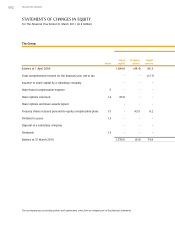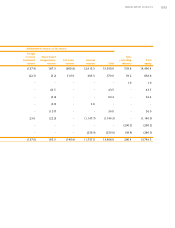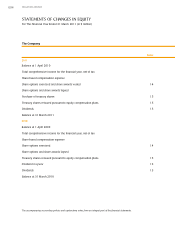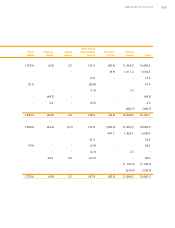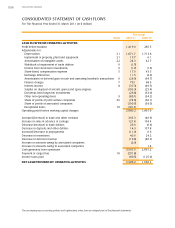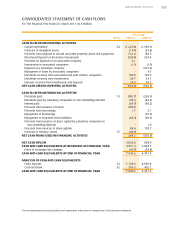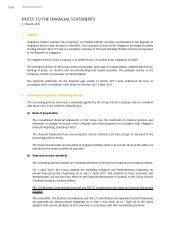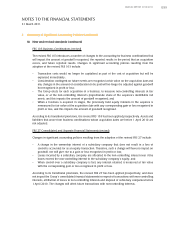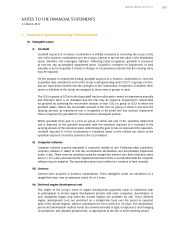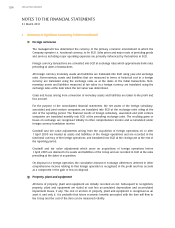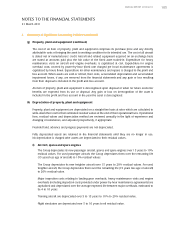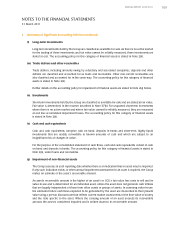Singapore Airlines 2011 Annual Report Download - page 103
Download and view the complete annual report
Please find page 103 of the 2011 Singapore Airlines annual report below. You can navigate through the pages in the report by either clicking on the pages listed below, or by using the keyword search tool below to find specific information within the annual report.
ANNUAL REPORT 2010/2011 101
NOTES TO THE FINANCIAL STATEMENTS
31 March 2011
2 Summary of Significant Accounting Policies (continued)
(c) Basis of consolidation (continued)
When the Group acquires a business, it assesses the financial assets and liabilities assumed for
appropriate classification and designation in accordance with the contractual terms, economic
circumstances and pertinent conditions as at the acquisition date. This includes the separation of
embedded derivatives in host contracts by the acquiree.
Any contingent consideration to be transferred by the acquirer will be recognised at fair value at
the acquisition date. Subsequent changes to the fair value of the contingent consideration which is
deemed to be an asset or liability, will be recognised in accordance with FRS 39 either in profit or loss
or as change to other comprehensive income. If the contingent consideration is classified as equity,
it is not to be remeasured until it is finally settled within equity.
In business combinations achieved in stages, previously held equity interest in the acquiree are
remeasured to fair value at the acquisition date and any corresponding gain or loss is recognised in
profit or loss.
The Group elects for each individual business combination, whether non-controlling interest in the
acquiree (if any) is recognised on the acquisition date at fair value, or at the non-controlling interest’s
proportionate share of the acquiree identifiable net assets.
Any excess of the sum of the fair value of the consideration transferred in the business combination, the
amount of non-controlling interest in the acquiree (if any), and the fair value of the Group’s previously
held equity interest in the acquiree (if any), over the net fair value of the acquiree’s identifiable assets
and liabilities is recorded as goodwill. The accounting policy for goodwill is set out in Note 2(e)(i).
In instances where the latter amount exceeds the former, the excess is recognised as gain on bargain
purchase in profit or loss on the acquisition date.
Transactions with non-controlling interests
Non-controlling interest represents the equity in subsidiary companies not attributable, directly or
indirectly, to owners of the Parent, and are presented separately in the consolidated statement of
comprehensive income and within equity in the consolidated statement of financial position, separately
from equity attributable to owners of the Parent.
Changes in the Company’s ownership interest in a subsidiary company that do not result in a loss of
control are accounted for as equity transactions. In such circumstances, the carrying amounts of the
controlling and non-controlling interests are adjusted to reflect the changes in their relative interests
in the subsidiary company. Any difference between the amount by which the non-controlling interest
is adjusted and the fair value of the consideration paid or received is recognised directly in equity and
attributed to owners of the Parent.



